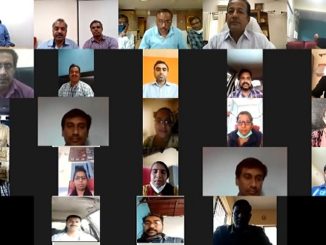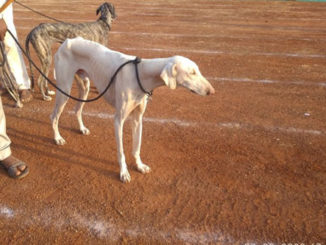Introduction
Progeny testing refers to evaluation of bulls on the basis of their daughter’s performance. Progeny testing is of two types, field based and farm based (Rosa, 2013). The method used by the breeder to make long-term change in animals is called selection. Selection based on a number of criteria has been the tool for achieving improvement in livestock throughout the world (Kumar et al., 2020). In India, selection of sires based on the breed characteristics and pedigree information whenever available was followed during the pre-independence period (Kumar et al.,2015). The most powerful tools in dairy breed improvement are an efficient bull progeny testing of a fairly large number of bulls and an intensive selection among the tested bulls (Johansson, 1952). Recent investigations have however, revealed that young bulls must be tested based on their daughters performance, before extensive use in artificial insemination program (Gaur, 2007). Progeny testing is a method for accurately evaluating and selecting top bulls and using them to produce future bulls. The parents of progeny with higher performance for desired traits are selected for future breeding. Another application of progeny testing refers to the detection of heterozygous individuals for an undesirable recessive trait. There is a great demand of crossbred bulls with high genetic merit in cattle genetic improvement programs. Population size further needs to be increased by including many organized/farmers’ herds to make the progeny testing program successful. Breeders always tend to go for selection of several traits at a particular time. Since the facilities available with the institutional farms are limited, it is necessary that the progeny testing programmes are extended to the farmers’ herds where large number of daughters per bull can be produced and recorded (Das et al., 2017).
Need/ Importance of progeny testing (DHAD. 2009)
- Usually sires rather than dams are progeny tested because generally sires produce more progeny in a given season or year and presumed to be more than half of the herd.
- More rigorous selection is possible in males, easy multiplication of elite germplasm and early selection of the males based on genetic markers.
- Genetic improvement depends on the accuracy of sire selection, selection intensity, generation interval and genetic variability of the traits considered.
- It is the best way of determining the genetic makeup of an individual.
- Chance at segregations & environmental factors cause greater deviation from true BV of parent (Buch LH.,2010).
Superiority of progeny testing over other selection criteria (Tomar, 2010)
- Useful for low h2 traits like production traits.
- High efficiency for sex limited traits and traits expressed after death.
- Accuracy of this more ideal due to evaluation of male parent.
- Performance of many progenies gives the best and most reliable information about the genetic merit of parent (individual) so it over the mendelian error of gene segregation.
- used to the detection of heterozygous individuals for an undesirable recessive trait.
Prerequisites in Progeny testing program (Tomar, 2010)
- Identified an area having a sizeable breedable female bovine population of the proposed breed in a compact area.
- Either a network of mobile AI technicians or tie up arrangement with an established AI service provider to carry out test AIs in the identified area.
- Village level infrastructure and exclusive manpower to implement and supervise the project.
- Semen Station.
Points to be considered
- Test as many as sires possible (5 to 10 would be minimal).
- Make sure that dams are mated to sires at random, within age group is possible.
- Produce as many progenies per sire as possible (10 to 15 progenies of either sex for growth traits but up to 300 to 400 progenies is required for traits like calving difficulty and fertility).
- No progeny should be culled until the end of the test.
- Offspring that are being tested are not a select group.
- Performance of an adequate sample of an animal’s progeny under normal environmental conditions will give a true indication of its genotype than any knowledge of individuality or pedigree.
Steps to be adopted in the field progeny testing program (Annual Report, CIRC. 2015-16)
- Selection of Districts/Sub-Divisions/Blocks
- Selectionof bulls for testing
- Orientation programme
- Identification of clusters in each block
- Farmers’ awareness programmes
- Registration / Identification of dams (cows)
- Maintenance of records
- Follow up of inseminated cows
- Detection and follow up of the progenies
- Organization of calf rallies or shows
- Organization of infertility treatment/HI camps
- Breeding the female progenies attaining maturity
- Recording of milk
- Estimation of probable breeding valueof sires
All the sires will be ranked on the basis of their sire index of which 20-30 % top ranking bulls shall be selected for future use as proven bulls for production of superior germplasm.
Field progeny testing programs center (Annual Report, CIRC. 2019)
| Sr.No. | Program regulating agencies | Program (Animal include) |
| 1 | Kerala Livestock Development Board | HFCB |
| 2 | BAIF Development Research Foundation | HFCB jointly with Project Directorate, Meerut |
| 3 | Andhra Pradesh Livestock Development Board | Jersey CB |
| 4 | Sabarmati Ashram Gaushala, Bidaj | HF crossbred, Murrah under the technical guidance of NDDB, Gir |
| 5 | Banaskantha Milk Union | Mehsana, Kankrej |
| 6 | Mehsana District Coop. Milk Producers’ Union | Mehsana |
| 7 | Haryana Livestock Development Boar | Murrah |
| 8 | Himachal Pradesh Livestock Development Board | Jersey |
| 9 | Punjab Livestock Development Board | Murrah, Sahiwal |
| 10 | Shri Ganganagar Milk Union | Sahiwal |
| 11 | Tamil Nadu Coop. Milk Producer’s Federation | Jersey CB |
| 12 | Uttar Pradesh Animal Breeding Research Organization | Murrah |
Limitations Progeny Testing
- It prolongs the generation interval.
- It is time consuming and expensive.
- Use of superior animals extensively once they have been located and errors due to environment that are not standard for the progeny are more serious limitations.
- Sires can be selected only when the progenies come for production and by the time the sire may become old and useless.
- The annual rate of genetic gain is lowered.
Conclusion
A large number of cows are being inseminated in the program so that records of sufficient daughters are achieved for sire evaluation despite significant data loss (Kumar et al. 2015). The top ranked bulls are used in nominating mating for production of male calves for induction in the new sets. The association between Field Progeny Testing staff and farmers is being improved by frequent visits, motivation to farmers and some provision of incentives. Manpower engaged in artificial insemination and data recording has been trained to maintain accuracy of the program. Excellent germplasm unit with modern facilities has been developed at ICAR-CIRC and its Bull Rearing Units. The project also helped to upgrade the nondescript or diluted Kankrej cattle into defined breed so as to increase the population size for conservation of this elite cattle germplasm.
References
- Annual Report (2015-16). ICAR-Central Institute for Research on Cattle, Meerut Cantt.
- Annual Report (2019). ICAR-Central Institute for Research on Cattle, Meerut Cantt.
- Buch, L.H (2010). Dairy cattle breeding schemes with or without genomic selection and progeny testing. Proceedings in 9th World Congress on Genetics Application in Livestock Production Leipzig, Germany.
- Das, A.K., Kumar, R., Rathee, S.K., Prakash, B., Anil, K., Dubey, P.P., Bhagat, R.L., Singh, C.B., Singh, U., Kumar, A., Tyagi, S. and Vineeth, B (2017). Genetic improvement of cattle through field progeny testing programme: An evaluation of achievement. Indian Journal of Animal Science, 87(12):1445-1451.
- DHAD (2009). Minimum Standards for Progeny Testing.
- Gaur, G.K. (2007). Environmental factors affecting various performance traits of Holstein Friesian × Sahiwal Cattle. Indian Journal of Dairy Science, 54: 209-13.
- Johansson, I (1952). Progeny testing in the breeding of farm animals. In Proceedings of the British Society of Animal Production 1: 79-105.
- Kumar, A., Radhika, G., Simon, S.E. and Aravindakshan, T.V (2020). Evaluation of contributions of ICAR- field progeny testing scheme towards genetic improvement of crossbred cattle of Kerala. Ruminant Science, 9(2):291-296.
- Kumar, S., Alex, R., Singh, U., Kumar, A. and Das, A.K (2015). Comparative performance evaluation of Frieswal bulls in organized farms and farmers herd. Indian Journal of Animal Sciences, 85(3): 316–19.
- Rosa, G.J.M (2013). Brenner’s Encyclopedia of Genetics (Second Edition).
- Tomar, S.S (2010). Textbook of animal breeding. kalyani publishers, India.






Be the first to comment